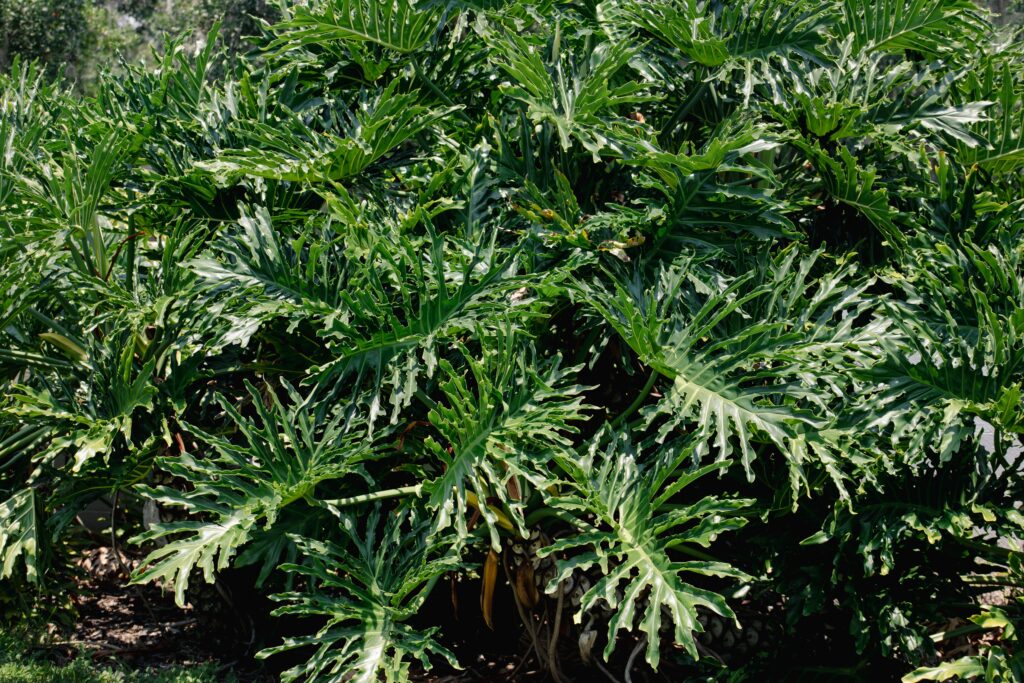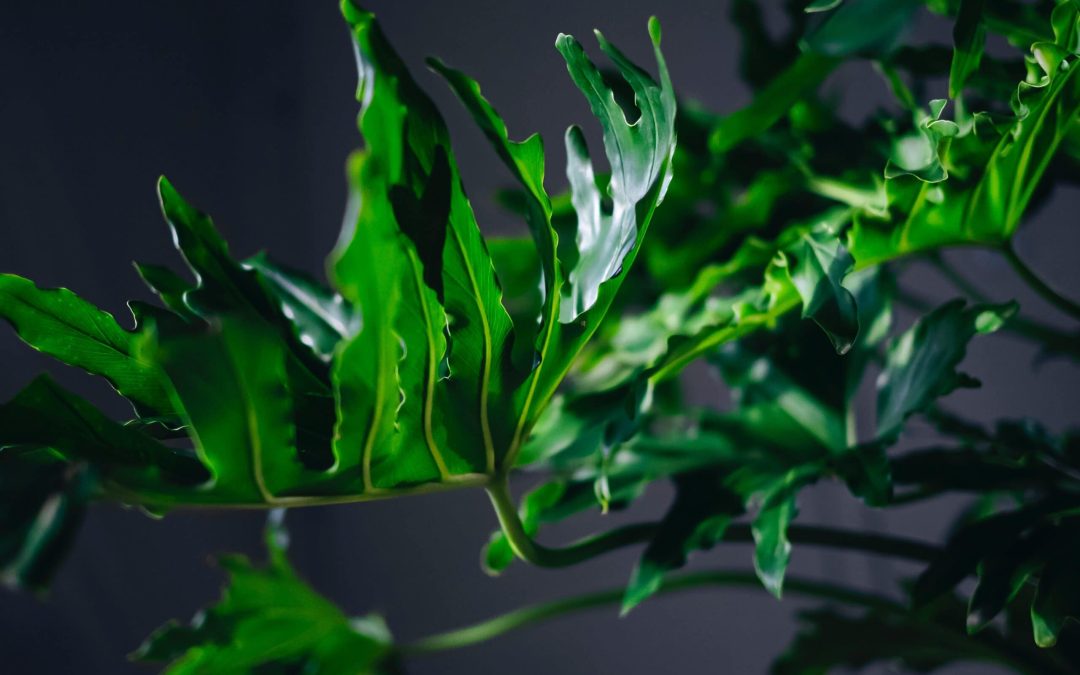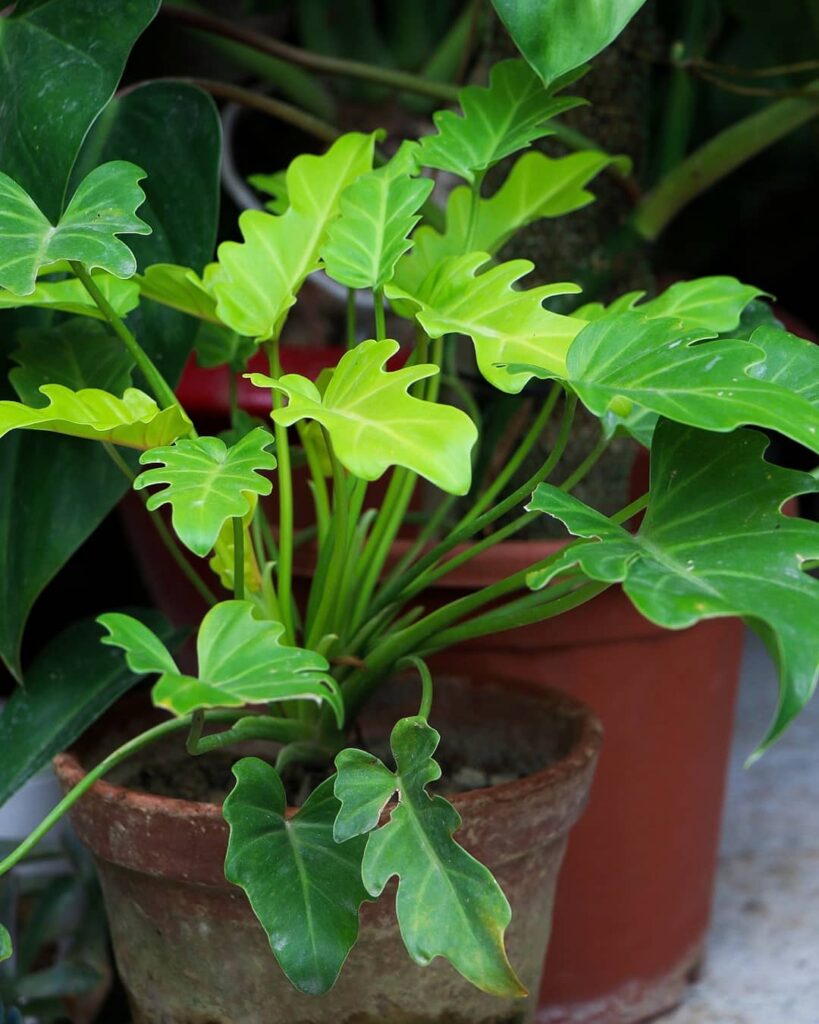Looking for a low-maintenance indoor plant that won’t grow too high AND loves the humid air in Florida? The Philodendron Xanadu is just what you’re looking for!
The Xanadu plant (also known as Philodendron Winterbourn) stands out with its dark green and leathery leaves that have a unique ‘feathered’ silhouette.
Unlike most plants, this little angel grows really well indoors and outdoors. At the same time, you don’t have to worry about it growing too tall because it’s not a climber. It will only grow to be about 4ft max and spread out rather than up.
Trimming the plant to preserve a certain size is easy, and propagation is even easier!
Whether you’re wanting to get a Xanadu or already have one… here are some Philodendron Xanaducare tips for happy growing.
Do Philodendron plants like full sun?

It’s very common to find this plant on the floor of rainforests. It’s adapted to growing in the shade of the crowded tree canopy and will grow best when provided little to medium amounts of light.
Technically speaking, it prefers to get around 8 hours of between 2,500 and 10,000 lux.
Going past 10k lux can damage the plant, and direct sunlight will burn the leaves of this shade-loving plant.
While this variety of Philodendron does alright in low light conditions, those that receive medium or indirect light will grow much faster and produce better leaves.
Although we’ve already said it, it’s worth repeating: Xanadu Philodendrons should never be left in direct sunlight.
Their leaves are suited for shade, not for direct sunlight.
How often should you water Philodendron Xanadu?
Much like it’s ability to survive with various amounts of sunlight, this plant is great at surviving through subpar watering routines. AKA, it’s hard to mess up watering this plant.
As with all plants, we want to provide an environment that’s similar to its native land. That’s the rainforest in this case.
Your Xanadu plant prefers a slightly higher-than-normal humidity level, but it will also do fine in more normal house conditions.
The frequency of your watering routine will depend on the size of the plant and the humidity levels on its environment.
While the plants grow best in moist soil, you’ll actually want to allow these plants to dry slightly in between waterings.
Being too dry is safer than developing root rot from overwatering.
To ensure you’re not overwatering, check the soil by sticking your finger about two inches down and make sure it’s dry. If the soil is moist to the touch, wait a little bit before watering again.
When watering, you’ll want to water your Xanadu plant by pouring room-temperature water over the entire surface until some starts to drain out the bottom.
**Warning: Philodendron Xanaducannot tolerate fluoride**
It’s best to use distilled water, rainwater, or filtered water because both fluoride and chlorine will hurt the plant.
Do Philodendron Xanadu plants grow fast?
On average, you can expect your Philodendron Xanaduto to grow quickly and be repotted yearly.
The concern with fast-growing plants is that their soil tends to lose its natural nutrients over time. As a rule of thumb, you’ll want to add some liquid fertilizer to young plants every 3 months.
Is the Xanadu an indoor plant?
As we hinted at during the intro, this plant grows well both indoors and outdoors. But the shape and color of the leaves will differ. The leaf shape will generally be more appealing and deeply lobed when grown outside. Though it’s still a pretty plant when grown indoors.
If you want to plant your Xanadu plant outside, then you should plan on using it as under-planting. Which is just a fancy way of saying the plants that cluster around the bottom of taller plants.
For those looking to add the plant to their indoor space, we suggest filling areas that get average to poor amounts of sunlight. This way, you can take advantage of the hardiness of this plant while also reserving VIP space for more sensitive plants.
Where did Philodendron Xanadu come from?
The Philodendron Xanadu plant is a perennial beauty that was first grown and cultivated in Brazil. Nowadays, you’ll find this easy-to-care-fore plant in households all around the world.
There are 500 varieties of philodendron recognized by the World Checklist of Selected Plant Families (WCSP).
The history of this plant’s name is actually pretty interesting.
You might sometimes see this plant called “Winterbourn.” This name is strange because Xanadu really struggles with cold weather. Perhaps that’s why it was renamed in 1988 by House Plants of Australia.
But!
That’s not the only time it got a name change. Thirty years later, in 2018, it was reclassified to the Thaumatophyllum genus. This is a new genus that roughly translates to “Wonder Leaf.”
There are currently only 21 species in the new genus, but that number will no doubt grow over time.
Is Philodendron Xanadu poisonous?
All parts of the plant contain needle-like calcium oxalate crystals, which, if chewed or eaten, can cause immediate pain or a burning sensation and swelling of the lips, mouth, tongue, and throat.
As North Carolina State University puts it:
“Philodendron Xanadu™’ Winterbourn’ contains a poisonous compound known as calcium oxalate. This compound is released when the leaves and stems are crushed. This compound may also cause skin irritation when the plant is handled. Pets and small children should avoid contact with this plant. To prevent contact dermatitis, wearing gloves is recommended when pruning or repotting.”
Where can I buy Philodendron Xanadu?
With just a basic understanding of what Xanadu needs to thrive, you can enjoy this beautiful plant in your indoor or outdoor space.
Take advantage of these Xanadu care tips by raising some plants of your own!
Visit our nursery at Troy Tropics and turn your backyard into an outdoor paradise. Our team of greenery experts can help you decide on the best plants for your home.
Contact us through our online form or call us directly at (941) 212-1671.







